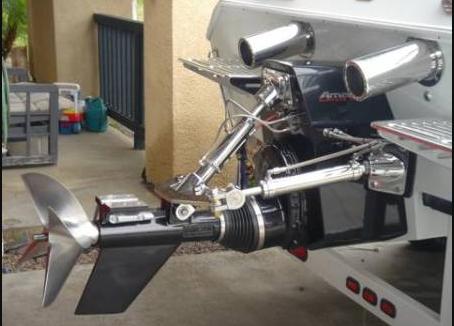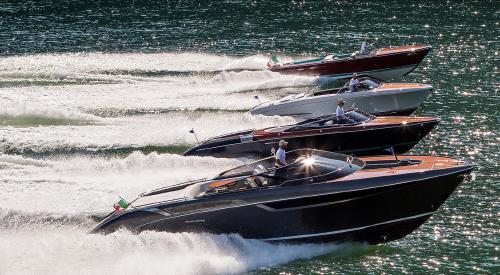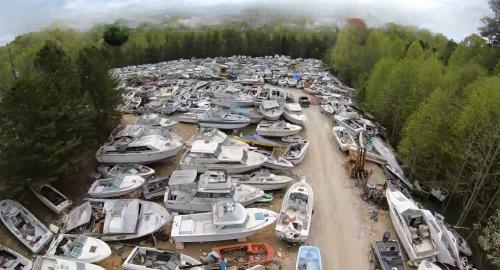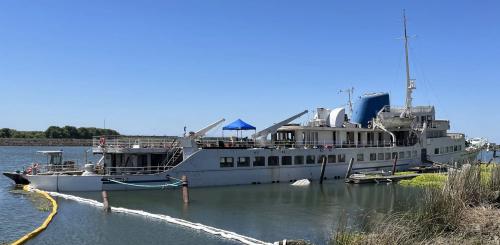Today, we’re setting sail on a fascinating journey through the history and workings of the Howard Arneson Drive, a remarkable piece of technology that has made waves in the boating world. Whether you’re a seasoned sailor or just someone who enjoys a leisurely boat ride, understanding the intricacies of this propulsion system can deepen your appreciation for the vessels that glide gracefully over water. So grab your life jackets and let’s dive in!
The Origins of the Howard Arneson Drive
The history of the Howard Arneson Drive is as intriguing as the technology itself. Developed in the late 1960s by the innovative mind of Howard Arneson, this propulsion system was born out of a desire for speed and efficiency on the water. Arneson, a skilled engineer and passionate boat racer, aimed to create a drive system that could outperform conventional inboard and outboard motors.
Before the Arneson Drive came into play, most boats relied on standard propeller systems that were effective but often limited in terms of speed and handling. Howard Arneson saw this limitation as an opportunity to revolutionize boat propulsion. He experimented with various designs, ultimately landing on a unique concept that incorporated a surface-piercing propeller. This innovation not only improved speed but also enhanced maneuverability, making it an instant hit within the racing community.
How It Works: The Mechanics Behind the Magic
Now that we’ve got a bit of background, let’s get into the nitty-gritty of how the Howard Arneson Drive actually works. At its core, the system utilizes a surface-piercing propeller that sits above the waterline when the boat is at rest. This design differs from traditional propellers that are fully submerged. The key advantage here is that when the boat accelerates, the propeller “breaks the surface,” which drastically reduces drag.
Here’s how the magic happens:
Surface-Piercing Propeller: As the boat gains speed, the propeller begins to lift out of the water. This reduces resistance and allows the boat to glide smoothly over the water’s surface. The propeller’s design also encourages better cavitation performance, which means it can generate more thrust without losing efficiency.
Transom-Mounted Design: The Arneson Drive is typically mounted at the transom of the boat, which is the rear section. This positioning helps ensure optimal performance, especially when cornering or making sharp turns. The drive assembly is usually positioned at a slight angle, which contributes to the propulsion system’s overall efficiency.
Trim Control: One of the standout features of the Arneson Drive is its adjustable trim control. This allows boaters to fine-tune the angle of the propeller in relation to the water’s surface. By making these adjustments, you can optimize speed and handling based on water conditions and boat load. It’s a game-changer for those who enjoy high-speed racing or simply want a smooth ride on a sunny day.
The Appeal of Arneson Drive in Racing
The Howard Arneson Drive quickly became the go-to choice for competitive boat racers. Its design offered several advantages that were hard to ignore. For starters, the system allowed for faster acceleration and higher top speeds. In a racing environment, where every second counts, this was a significant advantage.
Additionally, the reduced drag meant that boats could achieve better fuel efficiency, an essential factor for long races. Racers found that they could go further without constantly refueling, allowing for longer and more exciting competitions.
Another appealing aspect of the Arneson Drive is its versatility. It can be used across various types of boats, from sleek racing vessels to larger cruisers. This adaptability has led to its widespread acceptance in the boating community, further solidifying its place in maritime history.
Advantages
- 15% to 30% speed increase over conventional systems.
- 15% to 30% increase in fuel efficiency.
- More efficient than I/O’s
- Corrosion resistant
- Size adaptability, from 100 hp to over 10,000 hp applications.
- Low maintenance requirements.
- Ability to adjust propeller submergence while underway.
- Ability to adjust submergence to match horsepower output permits conversion of more thrust as appropriately needed.
- Propellers ventilate to the surface rather than cavitate under the hull reducing noise and destructive hull and prop erosion.
- Flexibility in engine installation location.
- Less Vibration than Inboard or I/O applications
- Shallow water operation (elimination of underwater appendages).
- Accessible propeller servicing.
- Steerage by the positive thrust of the propeller and not by the propeller thrust to the rudder. This is equivalent to sports car rack-and-pinion steering performance.
- For all it’s sophisticated performance, it is a less mechanically complex and fragile design than other propulsion systems.
- Most models are available in Magnesium Bronze or Aluminum.
- No limitations to shaft angle, blade top clearance, draft to restrict selection of optimum diameter propeller.
- Adaptable to a wide range of engine applications, whether gas, diesel, or turbine.

Popularity and Impact on the Boating Community
As we’ve seen, the Howard Arneson Drive has made quite a splash since its inception. Its unique design and performance capabilities have influenced not only racing but also the recreational boating community. Many boat manufacturers have adopted this technology, leading to a new wave of high-performance vessels that offer thrilling experiences for boaters.
The rise of the Arneson Drive has also inspired countless enthusiasts to delve into boat design and engineering. Aspiring boat builders are often intrigued by the idea of creating their own versions of this innovative propulsion system. It’s exciting to think about how this technology will continue to evolve and shape the future of boating.
The Future of Howard Arneson Drive
With advancements in materials and engineering, the future of the Howard Arneson Drive looks promising. Innovations in lightweight materials could further enhance performance while reducing the weight of boats. Additionally, the integration of technology, such as advanced monitoring systems, could provide boaters with real-time data on drive performance, allowing for even more precision in operation.
As we continue to explore the depths of boat propulsion technology, the legacy of Howard Arneson will undoubtedly remain a significant part of the conversation. So whether you’re racing across the waves or enjoying a peaceful day on the water.




Use the share button below if you liked it.